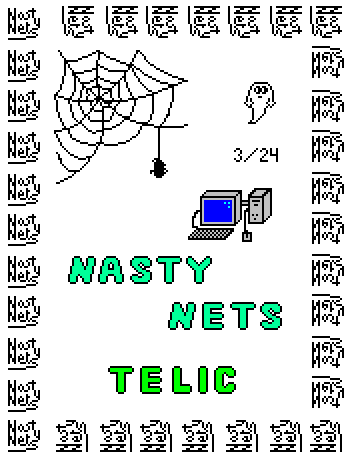View current page
...more recent posts
camille.pb on the interview I did with Paddy Johnson and Michael Bell-Smith last year:
...they discuss the traditional distinction between low art and high art and bring their new perspective, consisting in making the most out of easy webtools (via an interesting discussion of the animated gif's qualities for instance). The phrase Software art as I study [it] can be deceiving: one could think it has to do with super high-tech up-to-date and expensive software used by experts. Same for the word art, which could easily be interpreted by its application in the high fields of art history and institutions. When the two come together, though, here is the twist: they seem to degrade each other - and that's where the fun is: "art becomes web junk" says M. Bell-Smith. [...The artists] also develop a non-political stance, and it's interesting to find a way out of this boring debate of what is political art. It gives way to an idea of art practice that is not political by representation but by practice, by the context in which it is elaborated, by other stuff that the artist does and that he does not call art; Tom Moody's blog is filled with newspapers' extracts on american political life but in the interview he claims the right to political irresponsibility. I once heard the same words spoken by the net.art duo JODI: "the freedom to be irresponsible in front of one's computer," says Dirk Paesmans (in Matthew Mirapaul's 4/21/03 NY Times article "Distorting the digital mechanism").A good role model is the American proto-Pop abstractionist Stuart Davis, who was active politically but largely kept it out of his art. Writing in The New York School: A Cultural Reckoning, 1973, Dore Ashton tells an anecdote about his formative years, before the First World War:
[committed socialist John] Sloan was the artistic director of the radical magazine The Masses, to which Davis, Glenn Coleman, and Art Young contributed visual commentaries, based very often on their observation of the city, especially of the impoverished immigrants. Not long after Sloan arrived at The Masses, an ideological battle developed in which Max Eastman, John Reed, and Art Young insisted that only an art of "ideas" had a place in the magazine, by which they meant an art fully captioned. Art Young, whose life, as he wrote, was dedicated to the destruction of plutocracy, was an uncompromisig propagandist. Opposed to them were Sloan, Coleman, and the young Davis, who stood for "pure" art (genre scenes that needed no captions). In the dispute that ended his cartooning career, Davis learned, as he said, to be forever suspicious of "an art of ideas" and in fact, even when he was in the thick of political agitation later in the thirties, he never again brought his art and politics together.(To reiterate what I said in the interview: "Art should be like dreaming, and dreams don't always take us to good places, or places we want to go. Is it good for art to be 'apolitical' when the country is being driven off a cliff by fools? One person's frivolous pleasure states could be another's rejection of, or opting out of, the dominant control systems. I'd rather allow art to be 'immoral' and 'irresponsible'--and then analyze why I feel that way.")

Poster by T. Hallenbeck for Nasty Nets Los Angeles event. No idea what this event is about except that my left coast sisters and brothers will kick the asses of rival surf club supercentral.
From musician/popstar Thomas Dolby's blog. He recently attended the TED conference (Technology, Entertainment and Design) and lists this as a highlight:
-My Indian buffet lunch table today with Richard Branson, Peter Gabriel, Hans Rosling and Darryl Hannah (!) as they discussed how to get the world’s "Elders" into war situations to help resolve conflictsLimousine liberals, e-e-ew. Surely we've learned from Iraq that there are no Elders, and the main beneficiaries of "getting us into war situations" are arms merchants, support for whom needs to be ratcheted down, not up. In fairness to Dolby, he possibly means negotiation, not troop involvement in foreign conflicts, but it's doubtful.
